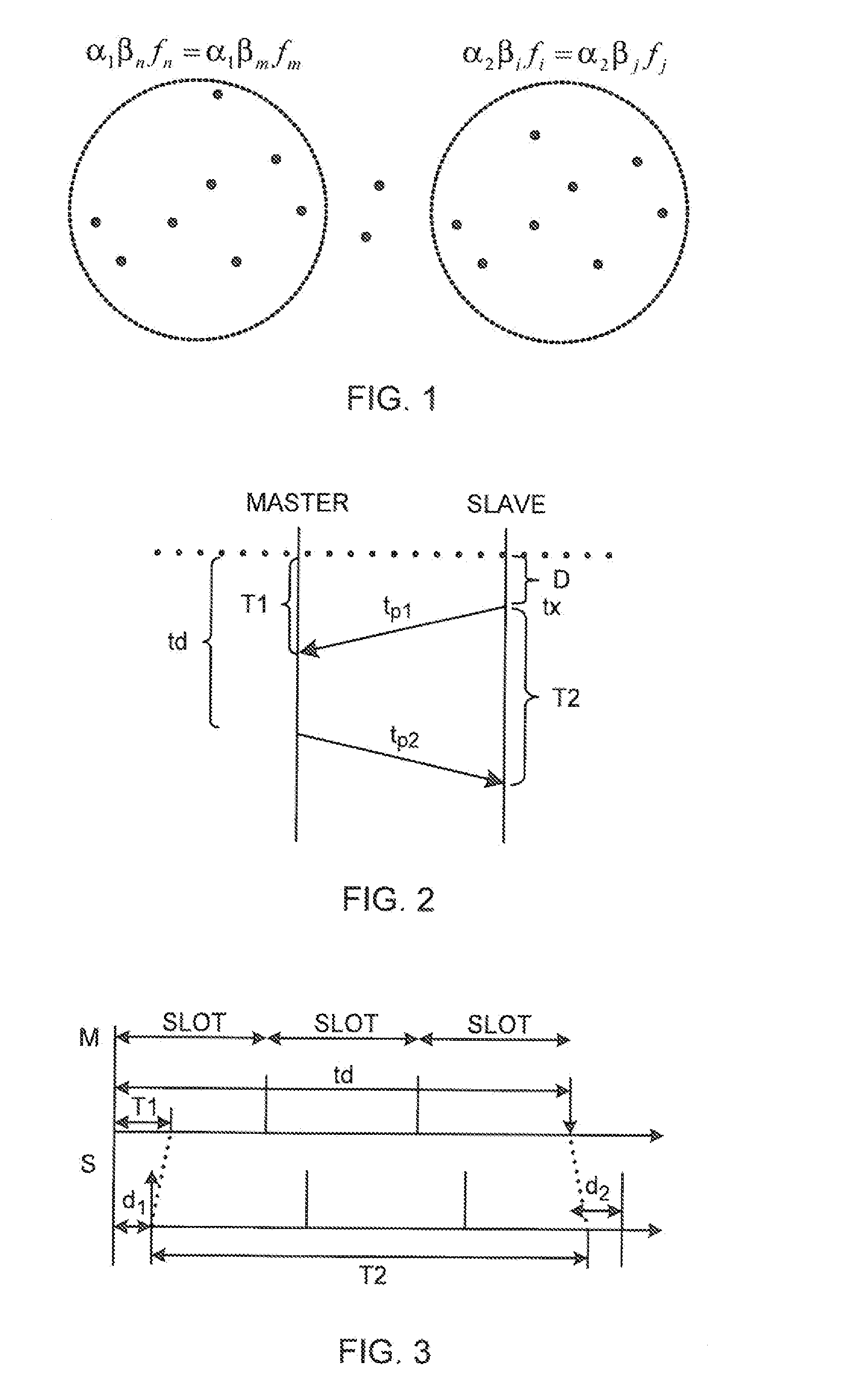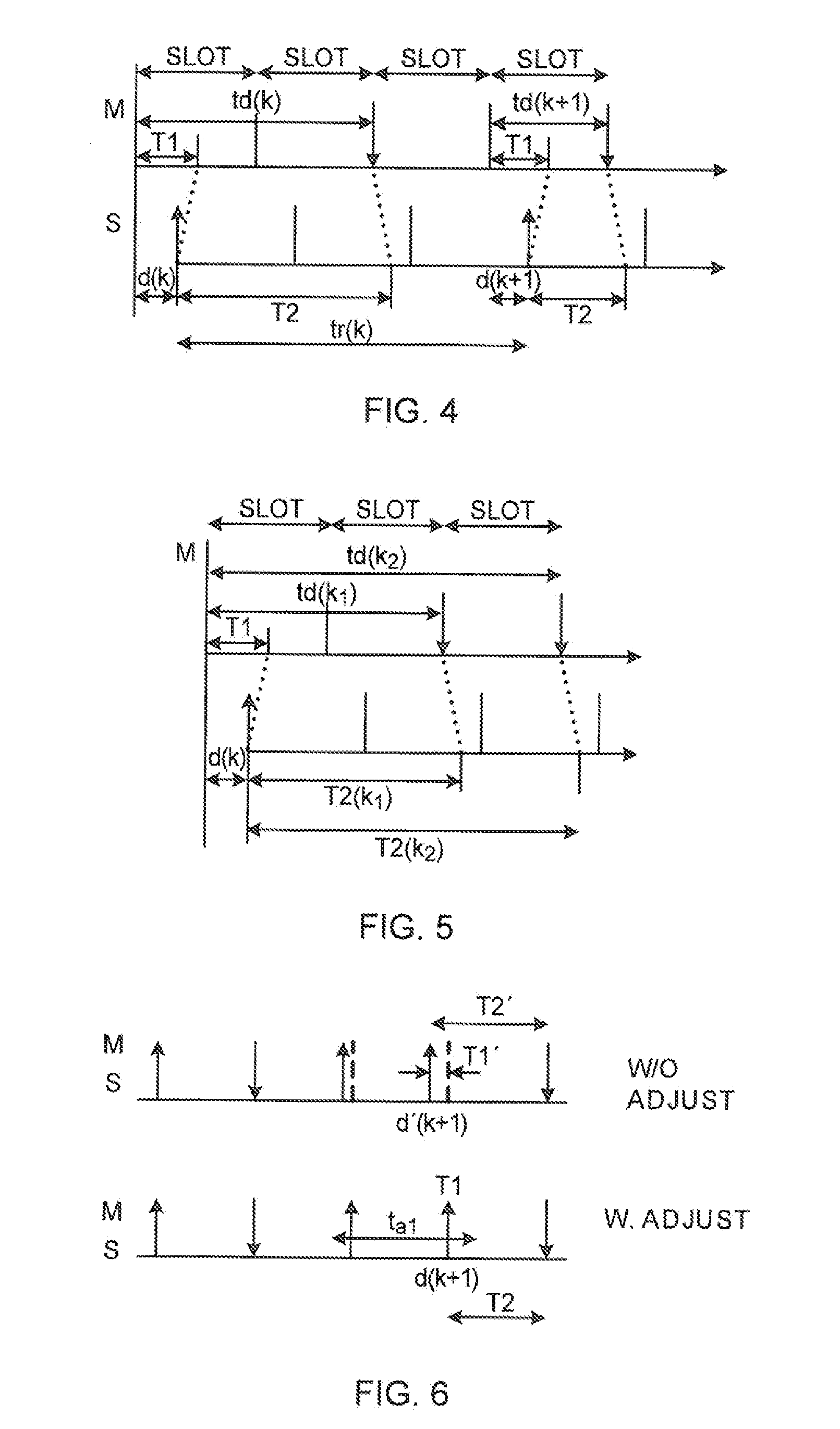Time synchronization for distributed mobile ad hoc networks
a distributed mobile ad hoc network and time synchronization technology, applied in the direction of network topologies, synchronisation arrangements, wireless commuication services, etc., can solve the problems of inability to reliably use manets, hardware and environmental restrictions, and limited time synchronization protocols, so as to reduce processing delays to the symbol level, high capacity, and uncertainty of delay
- Summary
- Abstract
- Description
- Claims
- Application Information
AI Technical Summary
Benefits of technology
Problems solved by technology
Method used
Image
Examples
Embodiment Construction
[0042]The inventive network time synchronization protocol, referred to herein as Cross-Layer Ad-hoc Network Synchronization (CLANS), is well suited for distributed MANETs including tactical networks in which the following conditions exist:[0043]1. The network is tree-structured, wherein one node acts as network master (M);[0044]2. The inventive CLANS protocol is started after network entry is completed, or existing network nodes determine their layer to the network master; and[0045]3. After network entry, coarse time synchronization is accomplished so that time offsets between the master node and the slave nodes are within a defined limit less than one-half the size of one time slot.
Routing Assumptions
[0046]Data routing is a major function in MANETs, wherein finding and maintaining a routing path is the major task. A common practice to accomplish the task includes having each node maintain a current list of its 1-hop neighbors, and having the node share this information with its 1-h...
PUM
 Login to View More
Login to View More Abstract
Description
Claims
Application Information
 Login to View More
Login to View More - R&D
- Intellectual Property
- Life Sciences
- Materials
- Tech Scout
- Unparalleled Data Quality
- Higher Quality Content
- 60% Fewer Hallucinations
Browse by: Latest US Patents, China's latest patents, Technical Efficacy Thesaurus, Application Domain, Technology Topic, Popular Technical Reports.
© 2025 PatSnap. All rights reserved.Legal|Privacy policy|Modern Slavery Act Transparency Statement|Sitemap|About US| Contact US: help@patsnap.com



